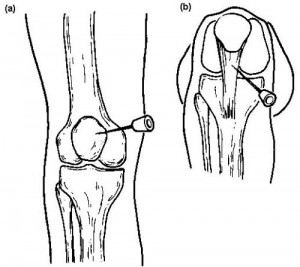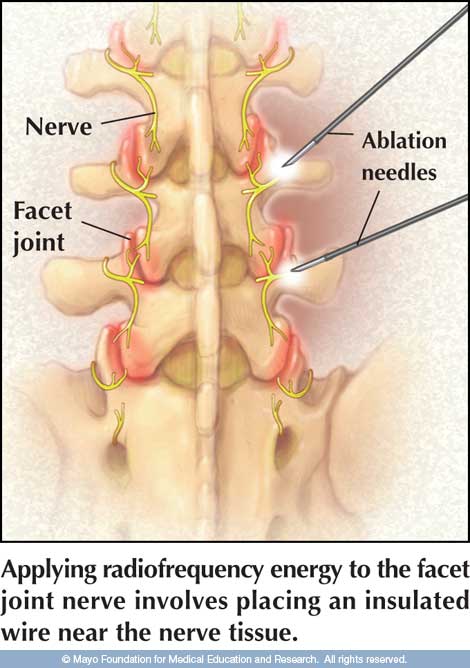Picture: Knee Joint Injection
Joint Injections for Painful Joints: Joint Injections are usually given for various “arthritis” of the joints, usually osteoarthritis. When your joint (e.g. knee) is “inflamed” due to “arthritis”, you will experience pain in the joint. One good treatment for a painful joint is injection of local anesthetic and a steroid into the joint to decrease or eliminate the inflammation causing your pain.
Indications for Joint Injections: Any joint in your body can become inflamed and painful. Some common painful joints experienced by patients are the shoulder, hip and knee joints. These joints under a tremendous amount of motion and “wear and tear” from use.
Technique: At Southern California Center for Pain Management, Dr. Bryan Lee can perform steroids injections into your joints and relief your pain. Depending on your situation and the joint involved, your injection(s) can be performed either in the office or at a surgery center with X-ray guidance (for accuracy and safety) +/- conscious sedation (“twilight sleep”) for your comfort.
If your joint injection is performed in the office, it will be a simple affair in which Dr. Lee does the injection under local anesthesia with the aid of your anatomical landmarks for needle placement. There is usually minimal recovery time needed. When you are ready, Dr. Lee will give you instructions for post-procedure care and discharge you home.
If your procedure is to be performed at a surgery center, you will be checked in at the surgery center and brought into the operating suite, where you will be greeted by the doctor and registered nurse. After placing monitors (e.g. blood pressure cuff, EKG, pulse oximeter, etc) on you, the nurse will give you IV sedation (if ordered). Afterwards, the doctor will begin by “numbing” the injection site with a local anesthetic. Afterward, with the aid of the fluoroscope, Dr. Lee will perform the actual injection(s), in which a local anesthetic and steroid combination is injected into your painful joint. After appropriate monitoring, you will then be transferred to the recovery unit before going home with a family member or friend. You are encouraged to “take it easy” for the rest of the day, and to follow the post-procedure instructions ordered by Dr. Lee. You will be able to resume your normal activities the next day.
Pain Relief Response and Duration: Most patients can expect joint injection(s) either alone or in a series to provide relief for months and even years, in some cases. But, like any medication, the steroid will “wear off” with time and you may require repeat injection(s). There will be a minority of patients who do not respond or only get relief for days to weeks. Unfortunately, Dr. Lee cannot always predict how long your pain relief will be or how you will respond, as different patients respond differently.


